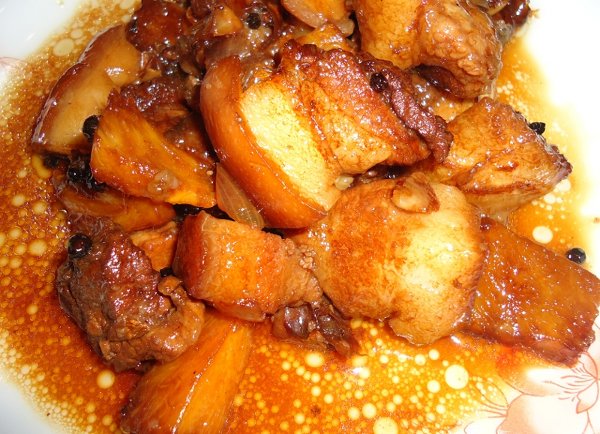Getting into food business could be one of the wisest decisions you could make. Put your cooking and presentation prowess into a test by engaging into catering services.
Starting up a catering business may be not that easy, but it is a matter of management. There are lots of things that must be taken into consideration like money or capital, target market, extra people like helpers and waiters to name a few. To be in this business, you must be patient and hardworking. A lot of sacrifices are needed because you will have to work longer hours even on weekends and holidays. Therefore, this could mean lessened quality time with your loved ones. But if you have the passion and determination to succeed and willingness to take risks, then you are most likely to succeed in this very lucrative business.
Start your menu with the most famous indigenous dish in the Philippines, which is Pork Adobo. Below this article you will learn how to cook Filipino pork adobo – this is the Pinoy favourite dish that is almost always present in every occasion. This menu is the easiest to prepare and very affordable as well. Aside from pork, there are different kinds of adobo that you can substitute. There’s squid adobo, chicken adobo, adobong kangkong and you can also combine chicken and pork.

Pork Adobo Ingredients:
- 1 kilo pork belly (cut into 2-inch sizes)
- 1 head garlic pounded
- 4 dried bay leaves
- 1/2 tablespoon peppercorns
- 1/2 cup soy sauce
- 1/2 cup vinegar water sugar (optional)
Note: There are many different ways on how to cook adobo. The procedure below is the simplest and easiest way.
How To Cook Filipino Pork Adobo
- Combine the pork, vinegar, soy sauce, water (how much water you add depends on your discriminating taste) garlic, peppercorns, bay leaves in a saucepan. You can add sugar if you like which depends on how sweet you want the sauce to be. [You may add and other seasonings you want, if you have some special preference].
- Bring to boil, lower heat to medium and then cook until thick oily sauce is formed.
- Serve hot!
Very simple and easy right? You can always improvise your adobo. Some put oyster sauce. In Pampanga they call it adobong puti because they use salt instead of soy sauce. In some places like in the Visayas, they put coconut milk. In Cavite they have the very yummy Adobong Salinas.Cavitenos with onions and tomatoes aside from garlic.
Adobo is indeed our unofficial National Dish. It roots from the Spanish word “adobar” which means marinade. When the Spaniards conquered the Philippines centuries ago, they discovered a cooking process, which was stewing with vinegar and they called it adobo. Chinese traders were the ones who introduced soy sauce though. But some Filipinos still use salt for their adobo.





